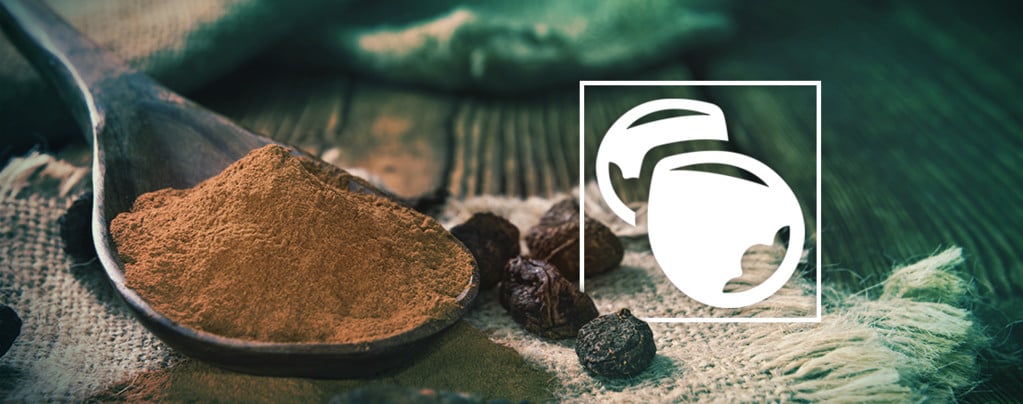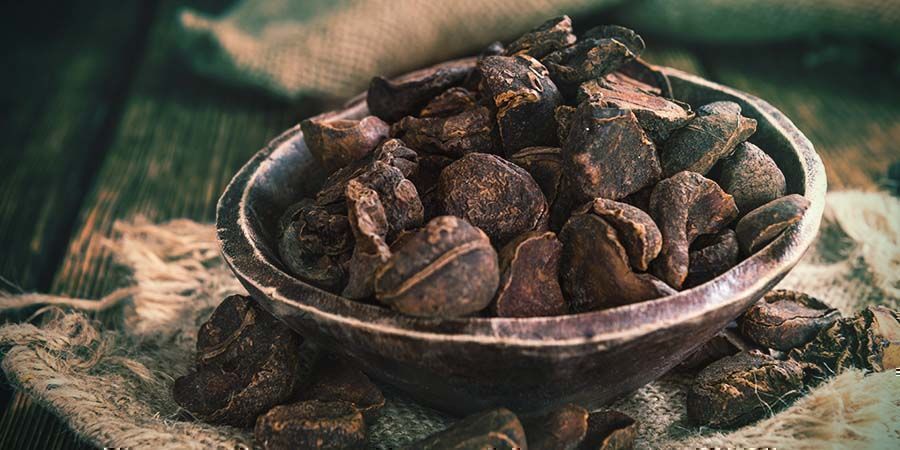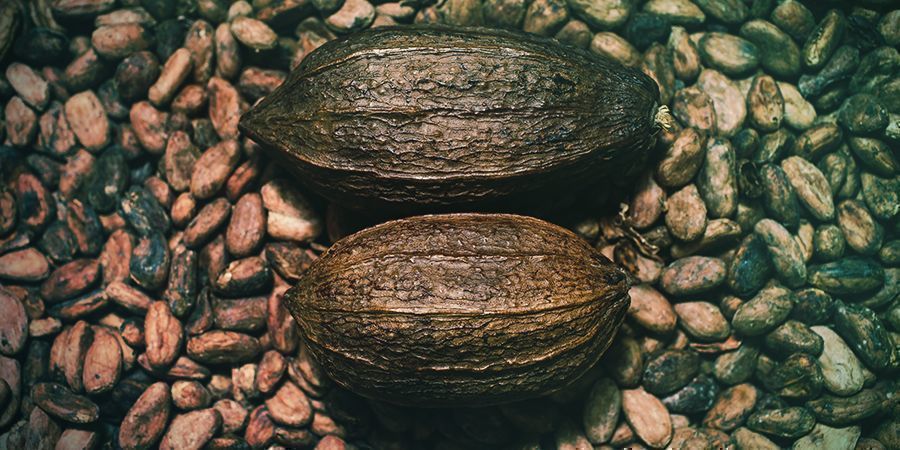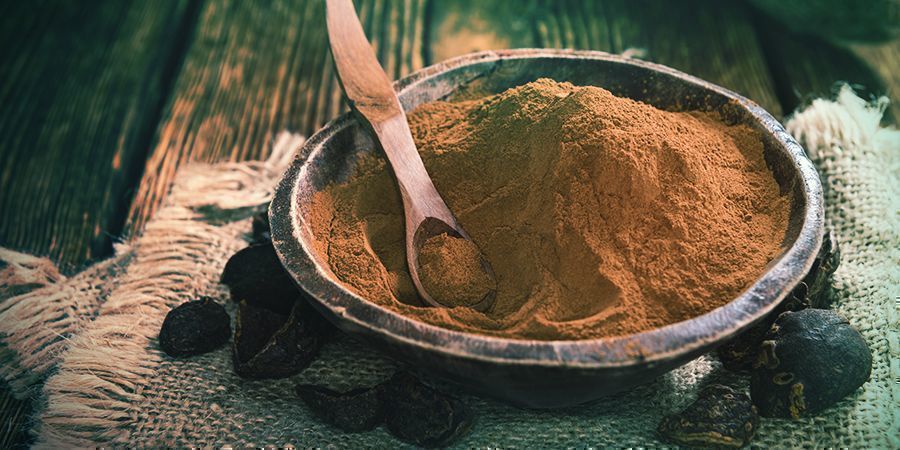
How And Why To Consume Kola Nuts
Kola nuts are mostly consumed to induce a stimulating effect. They contain about 3 times as much caffeine as coffee. They also house the stimulant theobromine. The nuts can simply be chewed, rendered into a powder, or infused into an assortment of beverages.
The kola nut is the fruit of the kola tree, of the Cola genus. This genus, belonging to the Sterculiaceae family, contains over 120 species of trees. The two most commonly cultivated are Cola acuminata and Cola nitida, primarily due to their edibility, heightened taste, and effects. Cola acuminata is an evergreen tree species that grows to 20 metres tall and features long, oval shaped leaves that are pointed at each end.
These trees produce yellow flowers with purple spots, as well as fruit with a star-shaped appearance. When breaking open one of these fruits, around 12 square seeds will be seen nestled in a white shell. The scent of these seeds is reported to be rather sweet and floral. When consuming the seeds however, a bitter taste will strike the tongue. The kola nut is commonly consumed to induce a stimulating effect.
WHERE DO KOLA NUTS COME FROM?

Kola trees are native to the tropical rainforests of Africa and therefore favour a hot and humid climate. However, the species can tolerate dry seasons in areas that provide adequate ground water. Kola trees are primarily lowland forest trees, although they appear to be quite flexible in their tolerance to external conditions. Some trees have been found living at heights of over 300m where rich and deep soils abound.
The nuts of the kola tree appear to have been used throughout history. West African cultures have been known to chew the nuts to restore vitality. Within these regions, the kola nut is associated with traditional spiritual practices of certain cultures.
The nut itself is seen as a religious object and is used as a sacred offering during prayers and important ceremonies. The nuts seem to fulfil cultural uses outside of the religious domain. It is reported that they also have been used as a form of currency by some West African groups, such as the Malinke and Bambara of Mali and Senegal.
Kola nuts are often used as a flavouring ingredient and are the source of the term “cola.” During the 1800s, pharmacist John Pemberton mixed extract of kola nuts with coca, sugar, and other ingredients. This became the beverage Coca-Cola. However, the modern recipe uses neither kola nor coca as active ingredients.
ACTIVE INGREDIENTS
Kola nuts aren’t exactly raging in popularity as a stimulant in the Western world, though they do contain stimulating ingredients that attract many users. There is a high possibility that most commercially purchased kola nuts are either Cola acuminata or Cola nitida, as these two species contain the highest concentration of the active ingredients. The main active ingredients in kola nuts are caffeine and theobromine.
Caffeine itself is a popular stimulant within the Western world, especially in the forms of coffee, tea, and energy drinks. Kola nuts are comprised of approximately 2 percent caffeine. Caffeine acts to stimulate the central nervous system, which results in consumers feeling more awake, alert, and energetic.
Such effects are why millions of people brew and consume coffee throughout the day during working hours to optimise output and maintain focus. Caffeine reaches its peak levels in the blood 1 hour after consumption, yet the effects can be continually felt for up to 6 hours. It’s not all positive when it comes to caffeine though, those who are sensitive or consume too much may be subject to restlessness, shaking, and other side effects.
THEOBROMINE

Theobromine also contributes to the vitalising effects felt after consuming a batch of kola nuts. Theobromine is an alkaloid that shares a similar molecular structure with caffeine; it is also found within tea and cocoa beans. Although the chemical acts as a stimulant, theobromine is around 10 times weaker than caffeine in this area.
Due to the presence of both of these chemicals, the primary effects of consuming kola nuts are stimulation and mental alertness. Kola nuts contain around 3 times the amount of caffeine found within coffee and therefore, the effects are different and more powerful. Kola nuts are also reported to improve mood and possibly boost libido.
HOW TO CONSUME KOLA NUTS

Kola nuts can be consumed in a multitude of ways. The most basic is to simply chew on the whole nuts. However, kola nuts aren’t exactly praised for their innate taste and are known to be very bitter. For this reason, they are often mixed into beverages or taken with sweeter foods.
Kola nuts can be processed into a fine powder. Mixing one teaspoon of this powder into coffee, tea, or even hot chocolate can add a bit more of a stimulating kick into these beverages. Honey can be added alongside kola to counteract any bitterness that the nuts might bring to the mix.
Kola nuts can also be used side by side with guarana, an herb that has a similar effect, but is more mild. This combination could be used to generate even more of a buzz.
For those who prefer to chew on the nuts but find them quite unappetising, another option would be to grind them up and mix them with lime.
-
 5 min
June 29, 2021
What Are The Effects Of Caffeine On Studying?
If you're wondering how to use caffeine to maximise your studying potential, then you've come to the right place! As with all drugs, there are optimal amounts that make good results more likely....
5 min
June 29, 2021
What Are The Effects Of Caffeine On Studying?
If you're wondering how to use caffeine to maximise your studying potential, then you've come to the right place! As with all drugs, there are optimal amounts that make good results more likely....
-
 5 min
April 30, 2020
10 Best Herbs To Brew A Tea With
At least since the ancient Egyptians, herbs have been brewed into tea. Teas can be used as stimulants and sedatives or even as aphrodisiacs. Use vaping herbs to make teas that can be beneficial in...
5 min
April 30, 2020
10 Best Herbs To Brew A Tea With
At least since the ancient Egyptians, herbs have been brewed into tea. Teas can be used as stimulants and sedatives or even as aphrodisiacs. Use vaping herbs to make teas that can be beneficial in...
-
 5 min
July 25, 2019
The Best Alternatives To Coffee: Natural Ways To Boost Energy
Although it may be hard to believe, not everybody is a fan of coffee. In case you happen to be one of those people, here is a list of perfect alternatives to the famous caffeinated beverage. Some...
5 min
July 25, 2019
The Best Alternatives To Coffee: Natural Ways To Boost Energy
Although it may be hard to believe, not everybody is a fan of coffee. In case you happen to be one of those people, here is a list of perfect alternatives to the famous caffeinated beverage. Some...











 United States
United States








